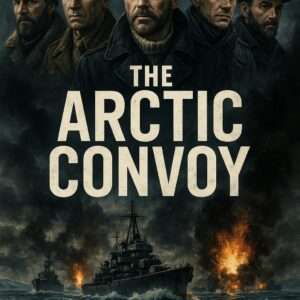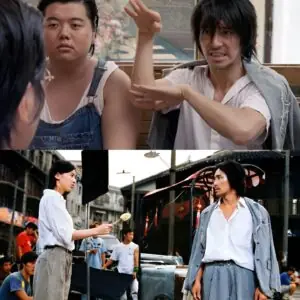An Unforgiving World, a Fragile Heart, and the Secrets That Bind Them
In The Iron Veil, Eliza R. Vance’s 2022 dystopian masterpiece, readers are pulled into a brutal, meticulously constructed world where freedom is a memory, and the truth is hidden behind a wall of silence. Balancing razor-sharp political allegory with the quiet heartbreak of human relationships, The Iron Veil is a dark but captivating journey into the very soul of resistance, loyalty, and sacrifice.
At its core, The Iron Veil is a novel about perception—how reality is shaped not just by power, but by the stories people tell to survive. Vance’s prose is lean and haunting, often bordering on poetic, and yet deeply grounded in the urgency of her characters’ struggles. This is not a book that eases its readers in gently. From the first page, it demands your attention—and your emotional investment.
The World Behind the Veil
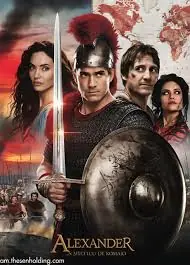
Set in the fictional continent of Arosia, the novel unfolds in the shadow of the Dominion, a totalitarian regime that maintains its grip over its people through the eponymous “Iron Veil”—a vast, psychic barrier that both suppresses individual thought and filters reality itself. The Iron Veil is more than metaphor: it is a literal mechanism, powered by a mysterious neural network known as the Core, that distorts memory, controls emotion, and rewrites the past.
Arosia is divided into Zones, with citizens assigned roles based on arbitrary “Affinity Markers.” The higher your Affinity to Dominion Values—loyalty, uniformity, silence—the better your station. Those who resist are either “Veiled” (reprogrammed into loyal citizens) or “Cast Down,” banished to the lawless Outer Blight.
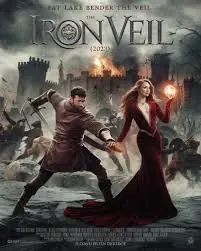
Vance’s world-building is one of the novel’s greatest achievements. Each zone is vivid and disturbing in its own way, from the sterile efficiency of Zone Prime to the broken remnants of pre-Dominion culture scattered through the Blight. You can feel the weight of surveillance pressing against every conversation, every decision, every act of hope.
The Characters: Broken Yet Defiant
The story centers on Kael Voss, a former Dominion archivist with a photographic memory—one of the few citizens who can retain fragments of the world before the Veil. Now living in hiding, Kael is a deeply reluctant protagonist, a man scarred by the role he once played in building the very system he now wants to destroy.
Kael is pulled back into the rebellion by Lira Dent, a fiery insurgent with a ghost-filled past and a dangerous secret: she can see through the Veil, and more than that, she can break it. Lira’s ability has made her a target of both the Dominion and the fractured resistance, and her presence in Kael’s life brings equal parts redemption and destruction.
Their dynamic is the emotional core of the novel. Vance avoids the usual tropes of romantic rebellion. Instead, she crafts a delicate relationship built on shared trauma, hesitant trust, and a yearning for truth in a world where truth is constantly manipulated. Their dialogue crackles with tension—sometimes philosophical, sometimes bitter, often devastating.
Supporting characters are equally compelling, especially Draycen Sohl, a Dominion scientist who begins to question his work; Mother Greel, the blind prophet of the Blight whose riddles might hold the key to unraveling the Core; and Ansel Rhay, Kael’s former mentor turned Dominion enforcer, whose presence haunts the novel like a shadow that won’t lift.
Themes: Memory, Control, and the Weaponization of Truth
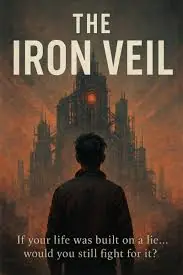
What sets The Iron Veil apart from other dystopian works is its philosophical depth. Vance doesn’t just depict oppression—she dissects it. Through Kael’s fragmented memories and Lira’s visions, we’re shown how history is rewritten not only by the victors but by the systems they build. The Veil becomes a metaphor for censorship, propaganda, and the erasure of culture, yet it is also something more: a reflection of the human mind’s ability to suppress its own truths for survival.
There is a running theme of duality—memory versus reality, loyalty versus love, and safety versus freedom. Vance asks us: what would you give up to live without pain? And is it still life if you can no longer feel it fully?
In a particularly poignant scene, Kael reflects on a moment from his childhood—a mural of a golden bird, now scrubbed from all records by the Veil. That image becomes a motif throughout the book, symbolizing the flickering persistence of beauty in a world designed to erase it.
Plot and Pacing: A Slow Burn That Explodes
Though the novel opens quietly, the tension builds like a noose tightening around the neck. Vance is patient in her storytelling, allowing character development to breathe while carefully seeding moments of revelation and suspense. Some may find the first third of the book slow, especially if they expect immediate action, but this buildup pays off in spades.
By the halfway mark, the narrative picks up with dizzying momentum. The second act delivers a series of betrayals, escapes, and desperate alliances. There’s a particular twist—spoiler-free here—that reframes everything we thought we knew about the Iron Veil and the nature of the Core. It’s a gut punch in the best way.
The climax is both brutal and beautiful, as the resistance launches its final assault on the Core in a storm of illusions, memories, and psychic warfare. The final chapters are almost dreamlike in their execution, and readers may need to reread them to fully grasp their layered meanings.
And then comes the ending—devastating, ambiguous, perfect. Vance does not give us a neat resolution. Instead, she leaves us with the echo of a question: “If the Veil falls, what will we see on the other side?”
Final Verdict: A Modern Classic in the Making
The Iron Veil is not an easy read. It demands attention, empathy, and intellectual engagement. But it rewards that effort with one of the most original and emotionally resonant dystopian novels of the decade. Eliza R. Vance has crafted a world that feels frighteningly plausible and populated it with characters you won’t forget.
For fans of 1984, The Handmaid’s Tale, or Never Let Me Go, this is essential reading—but it’s more than an echo of its influences. The Iron Veil stands firmly on its own, a modern classic that will likely be studied, debated, and cherished for years to come.
Rating: 9.5/10


